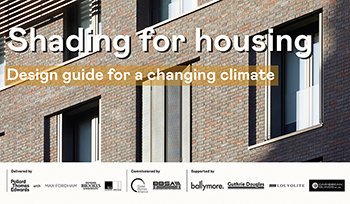Productivity in construction: Creating a framework for the industry to thrive
On 24 May 2016, the Chartered Institute of Building (CIOB) published a report intended to inspire debate about productivity in the UK construction industry, and how the built environment supports productivity growth in the UK as a whole.
Government figures released in April 2016, demonstrated the biggest fall in UK productivity since the financial crisis in 2008. In construction, productivity has only improved by 1.4% since 1997.
The new report, Productivity in Construction: Creating a Framework for the Industry to Thrive, uses the Government’s 15-point productivity plan as a framework, illustrating how, point-by-point, construction acts as an agent of change to improve productivity within the wider economy, how it might improve its own internal productivity, as well as highlighting the opportunities and challenges in delivering improvement.
Most advanced nations demonstrate poor productivity growth in construction and have done for many years. That this is a global issue suggests that difficulties in improving productivity are likely to be within the nature of the industry rather than specifically within the UK. The factors that can boost productivity are well known, at least in theory, and have been for many decades. This suggests the problems holding back progress lie deep within the industry.
The report seeks to identify what these factors might be, supported by survey evidence from across the industry, policy makers and industry experts showing a wide consensus on many of the policies that should boost construction productivity.
Construction analyst and report author Brian Green further explains why caution is needed in interpreting the bald statistics:
“Firstly, there’s a need to measure more effectively the productivity of the whole process of delivering the built environment, rather than just what happens on site. Otherwise we end up missing the beneficial impacts of, for instance, better design or off-site manufacture.
“Secondly, we need to look at what construction does rather than what it is and how it impacts on the wider economy. And, thirdly, it is worth noting that as nations develop they often choose to spend more on repairing, maintaining and adapting the existing built environment. This work tends to be more labour intensive than new work, so can have the effect of suppressing the overall labour productivity figures.
“Paradoxically, you could be building more productively to a higher quality, with innovation in design, product manufacture and construction management, while the statistics suggests the industry is becoming less productive.”
“As the OECD states, productivity is about working smarter, rather than working harder.”
While the report makes a number of practical recommendations from its findings - such as tying public investment to training and job creation; developing new business models and financial models with incentives directed more towards productivity; and creating construction innovation and excellence hubs - it expresses two more fundamental concerns:
- Firstly, productivity may be being measured incorrectly. The value of the design, the materials and components, and much of the plant and machinery used on site are not counted, and it’s difficult to measure improvements in quality or safety.
- Secondly, and perhaps most importantly, it stresses that as the quality of the output construction produces generally boosts the productivity of the rest of the economy, productivity in construction should not be seen as an end in itself.
CIOB conclude, 'while construction productivity must improve, it must improve in such a way that enhances the productivity of the whole nation. Any understanding of this should be at the heart of policy making.'
To read the research see Click here.
--CIOB
[edit] Related articles on Designing Buildings Wiki
- Benchmarking.
- Construction productivity 1977.
- Demonstration project.
- Earned value.
- Identifying the causes of trends in construction labour productivity.
- Increasing productivity in 2018.
- Key Performance Indicators.
- Productivity.
- Tackling the productivity challenge.
- The history of human resource management.
Featured articles and news
Shading for housing, a design guide
A look back at embedding a new culture of shading.
The Architectural Technology Awards
The AT Awards 2025 are open for entries!
ECA Blueprint for Electrification
The 'mosaic of interconnected challenges' and how to deliver the UK’s Transition to Clean Power.
Grenfell Tower Principal Contractor Award notice
Tower repair and maintenance contractor announced as demolition contractor.
Passivhaus social homes benefit from heat pump service
Sixteen new homes designed and built to achieve Passivhaus constructed in Dumfries & Galloway.
CABE Publishes Results of 2025 Building Control Survey
Concern over lack of understanding of how roles have changed since the introduction of the BSA 2022.
British Architectural Sculpture 1851-1951
A rich heritage of decorative and figurative sculpture. Book review.
A programme to tackle the lack of diversity.
Independent Building Control review panel
Five members of the newly established, Grenfell Tower Inquiry recommended, panel appointed.
Welsh Recharging Electrical Skills Charter progresses
ECA progressing on the ‘asks’ of the Recharging Electrical Skills Charter at the Senedd in Wales.
A brief history from 1890s to 2020s.
CIOB and CORBON combine forces
To elevate professional standards in Nigeria’s construction industry.
Amendment to the GB Energy Bill welcomed by ECA
Move prevents nationally-owned energy company from investing in solar panels produced by modern slavery.
Gregor Harvie argues that AI is state-sanctioned theft of IP.
Experimental AI housing target help for councils
Experimental AI could help councils meet housing targets by digitising records.
BSRIA Occupant Wellbeing survey BOW
Occupant satisfaction and wellbeing tool inc. physical environment, indoor facilities, functionality and accessibility.
























